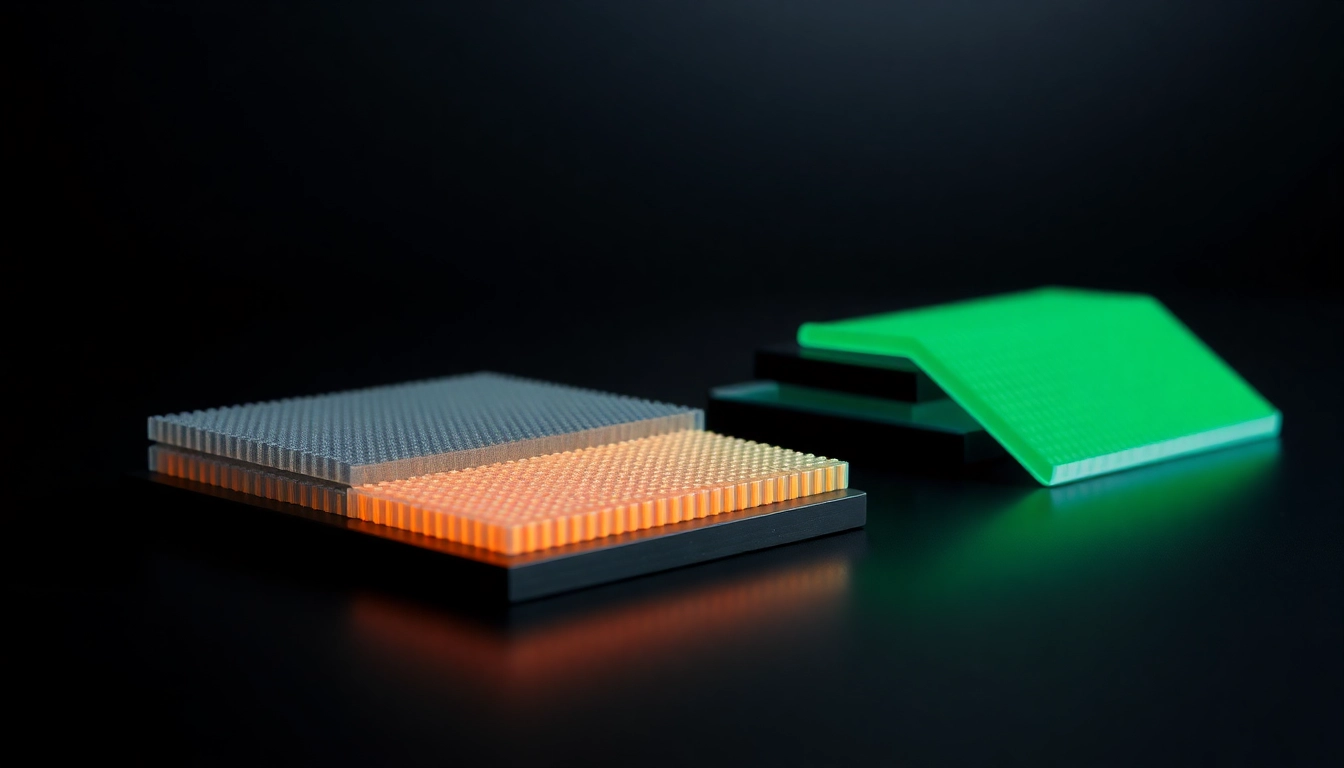Understanding Thermal Management Materials
Definition and Importance
In the rapidly evolving world of electronics, the ability to manage heat effectively is crucial to ensuring optimal performance and longevity of devices. Thermal management materials encompass a diverse array of products designed specifically for heat dissipation in electronic applications. These materials are foundational in preventing overheating, maintaining operational efficiency, and extending the life cycle of components.
The importance of thermal management materials has surged with the increased integration of high-performance components in compact designs. As devices become smaller and more powerful, the generation of heat in electronic systems also escalates, making thermal management a priority. Without proper heat management strategies, electronic devices can suffer from performance degradation, reduced reliability, and in extreme cases, complete failure.
Types of Thermal Management Materials
Thermal management materials can be categorized into several types, each serving a unique purpose in heat dissipation and management:
- Thermal Interface Materials (TIM): These materials are placed between heat generators (like microprocessors) and heat sinks to enhance thermal conduction. Examples include thermal grease, pads, and gels.
- Gap Fillers: Typically soft and conformable, these materials fill the air gaps between components and surfaces to improve heat transfer.
- Thermal Adhesives: These not only bond components but also possess thermal conductivity to help dissipate heat.
- Phase Change Materials (PCM): These materials absorb and release thermal energy during phase transitions, effectively regulating temperature.
- Heat Spreaders: Made from materials like copper or aluminum, these effectively distribute heat away from the source.
Common Applications in Electronics
Thermal management materials find extensive applications across various electronic industries:
- Consumer Electronics: In smartphones, laptops, and tablets, thermal management materials mitigate overheating caused by high-performance processors.
- Automotive: Modern vehicles rely on thermal management materials for battery management systems and electronic components to ensure safety and efficiency.
- Telecommunications: Equipment such as servers and networking hardware benefit from effective thermal management to maintain performance and reliability.
- Industrial Applications: Equipment used in harsh environments, such as manufacturing tools, require robust thermal solutions to function properly over time.
Key Attributes of Effective Thermal Management Materials
Thermal Conductivity Explained
At the heart of thermal management materials is thermal conductivity, which measures a material’s ability to conduct heat. The higher the thermal conductivity, the better the material can dissipate heat. For electronics, materials with excellent thermal conductivity—like copper, aluminum, and certain polymers—are preferred.
Durability and Longevity Considerations
Durability is a critical factor in selecting thermal management materials. With exposure to varying temperatures and mechanical stresses, materials must be resistant to degradation over time. Factors such as thermal cycling, mechanical vibration, and environmental conditions (such as humidity and chemicals) play a significant role in material choice.
Environmental Impact and Compliance
As global awareness regarding environmental issues grows, the demand for sustainable materials increases. Manufacturers often face the challenge of balancing performance with environmental responsibility. Compliance with environmental regulations and standards is essential, and materials that are recyclable or made from sustainable resources are becoming increasingly recognized and adopted.
Best Practices for Selecting Thermal Management Materials
Evaluating Material Properties
When selecting thermal management materials, it’s essential to evaluate various properties, including:
- Thermal Conductivity: As previously mentioned, high thermal conductivity is paramount.
- Viscosity: For TIMs and adhesives, viscosity affects application and performance.
- Cure Time: Depending on integration requirements, cure time can influence production schedules.
Aligning with Application Requirements
Understanding the specific requirements of your application is crucial. Factors such as operating temperature range, thickness restrictions, and assembly processes must align with material properties to ensure optimal performance. Conducting thorough testing in real-world application conditions is also essential for validating material choice.
Cost vs. Performance Analysis
While performance is critical, cost analysis plays a vital role in material selection. An expensive material may provide superior thermal management, but if cost-prohibitive, it could lead to budget constraints. It is vital to strike a balance between cost and performance by evaluating long-term reliability, potential maintenance, and replacement costs.
Installation Techniques and Tips
Preparation of Surfaces
Proper installation of thermal management materials begins with surface preparation. Consideration must be given to cleanliness, surface roughness, and uniformity. Surfaces should be thoroughly cleaned and, if necessary, treated to enhance adhesion and thermal performance.
Application Methods for Various Materials
The method of application depends greatly on the type of thermal management material being used:
- Thermal Grease: Generally applied using a spatula or syringe, ensuring even coverage without air bubbles.
- Gap Fillers: Should be carefully cut and applied to fit snugly into gaps to ensure maximum contact.
- Thermal Adhesives: Require mixing (in dual-component forms) prior to application, with a careful consideration of cure times.
Common Mistakes to Avoid
Avoiding common mistakes can streamline the effectiveness of the thermal management solution:
- Inadequate Surface Preparation: Skipping this step can impair thermal conductivity
- Excessive Material Application: Too much TIM can create air pockets that obstruct heat transfer.
- Ignoring Material Properties: Not considering the specific needs can lead to incompatibility issues.
Future Trends in Thermal Management Materials
Innovations in Material Science
The future of thermal management materials holds exciting innovations. Researchers are exploring advanced materials like aerogels, nanocomposites, and phase-change materials that can substantially enhance heat transfer efficiency. These innovations can offer manufacturers cutting-edge solutions to address the growing thermal management challenges faced by modern electronic devices.
Growing Demand in Emerging Technologies
As technologies evolve, including electric vehicles, 5G communications, and renewable energy sources, the demand for effective thermal management solutions will increase. Devices used in these sectors will require advanced thermal materials capable of handling increased heat loads while remaining compact and efficient.
Impact of Regulatory Changes
With a heightened focus on sustainability, regulatory changes are likely to influence the materials selected for thermal management. Stricter guidelines on environmental impact will drive manufacturers to pursue eco-friendlier thermal management materials and develop innovative strategies to reduce their carbon footprint.
